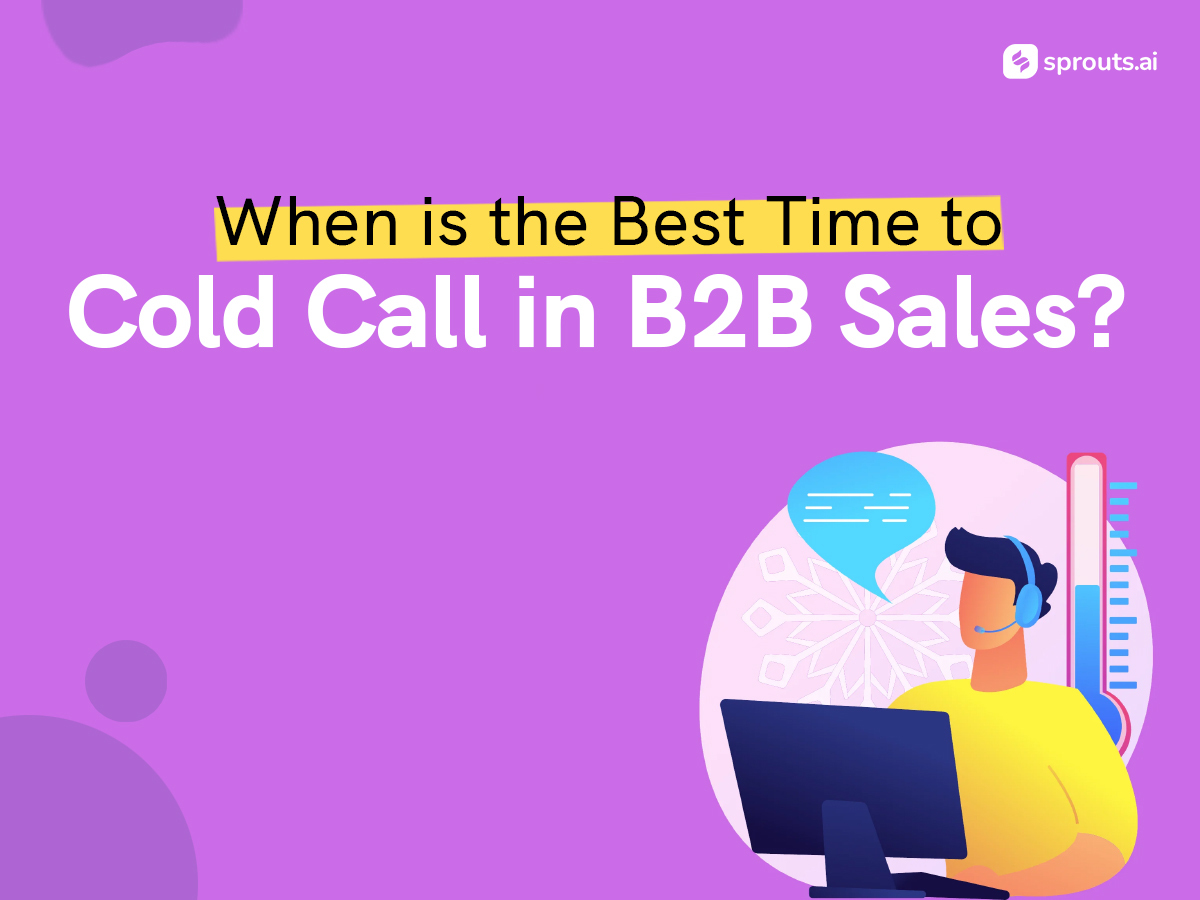Cold calling has proven to be one of the most effective lead generation strategies. But, have you ever considered what affects its efficiency the most?
Customers are not always available to receive calls, as they may be engaged in more critical activities.So, understanding the ideal schedule of customers and planning cold calls based on their availability becomes crucial. This is how we strategize to determine the optimal time for cold calls. Keep reading as we explore the best time for cold calls in B2B sales.
The Morning Advantage
As the sun rises in the business world, so do the opportunities for cold-calling success. Studies consistently show that calling prospects during the early morning hours significantly increases the chances of a positive reception. During this time, decision-makers are often more focused and open to discussions, as the day’s chaos hasn’t fully set in. Catching them before the avalanche of emails and meetings can provide a golden window to present your pitch.
It’s essential to tread lightly during the earliest hours. Please respect that your prospect might be settling into their workday routine, so ensure your call is concise, valuable, and, most importantly, relevant to their needs.
The Mid-Morning Sweet Spot
As the clock inches toward mid-morning, you’ll find another favorable pocket for cold calling. By now, your prospects have had a chance to settle into their tasks, clear the initial morning rush, and are likely more receptive to a well-timed call. This period balances the calm of the morning and the gradual buildup of the day’s demands.
Consider leveraging this time to introduce your product or service and engage in brief conversations. Pose thoughtful questions that pique their interest and align with their business challenges. Remember, respecting their time and offering value in every interaction is key.
The Lunch Break Dilemma
While many might consider the lunch hour a time to avoid, it can be a double-edged sword. Some decision-makers might use this time to catch their breath, while others might see it as an opportunity to tackle personal tasks or enjoy a quiet moment. The key here is understanding your target audience.
Research your prospects’ habits and preferences to determine if they will likely be available during lunch. If you find a match, a strategic call during this period could catch them in a more relaxed state, potentially leading to a more open and genuine conversation.
Afternoon Resilience
As the day progresses, so does the challenge of getting your foot in the door. Yet, the afternoon can still be a fruitful time for cold calling if approached strategically. Mid-afternoon, around 3 to 4 PM, can be a sweet spot. By this time, decision-makers have likely addressed urgent matters and are more open to considering new opportunities.
Tailor your approach to acknowledge the day’s challenges while highlighting how your solution can simplify their workload or address pain points. Remember, clarity, relevance, and timing are your allies during the afternoon cold calls.
The Evening Advantage
Contrary to popular belief, evenings offer a unique opportunity for impactful cold calling. As the workday winds down, decision-makers may have more mental bandwidth to engage in meaningful conversations. A well-timed call during the early evening hours, around 5 to 6 PM, might catch them in a reflective state, making them more receptive to exploring new solutions.
The key to success lies in understanding the work culture of your target industries. An evening call may be intrusive in sectors where professionals often work late. Research and adapt your strategy accordingly, ensuring that your outreach aligns with the expectations and preferences of your audience.
Embracing the Digital Tools
Email, social media, and other online platforms have become powerful tools for initial outreach. Integrating these digital channels with your cold-calling strategy can enhance your overall approach.
Consider sending a personalized email or connecting on LinkedIn before making the call. This establishes a touchpoint and increases the likelihood of your call being expected. Combining traditional cold calling with digital engagement can create a more comprehensive and effective outreach plan.
Adapting to Time Zones and Global Markets
Understanding and adapting to different time zones is paramount for B2B sales professionals operating in a global landscape. Timing your cold calls to align with the working hours of your target audience demonstrates respect for their schedules and increases the chances of a positive response.
Leverage technology to track and analyze the best times to connect with prospects in different regions. Automated scheduling tools can help streamline this process, ensuring that your outreach is well-timed and seamlessly synchronized with the global clock.
The Art of Persistence
Regardless of the time chosen for your cold calls, persistence is vital. The reality of B2B sales is that decision-makers are often busy, and the initial outreach might only sometimes yield immediate results. Be prepared for follow-ups, and use a multi-channel approach to stay on their radar.
Craft thoughtful follow-up emails, engage on social media, and consider sending relevant content that adds value to their business. The art of persistence lies in finding the delicate balance between staying top-of-mind and respecting their time and boundaries.
The best time to cold call is not a one-size-fits-all equation. It’s an art that requires a deep understanding of your target audience, their preferences, and the nuances of their workday. Combining strategic timing with a personalized and value-driven approach can elevate your cold-calling game and open doors to meaningful business relationships.
Perfecting the skill of timing is an ongoing journey. Stay agile, adapt to changes, and always be attuned to the subtle rhythms of the business world. In doing so, you’ll unlock the best times to make that crucial cold call and set the stage for long-term success in B2B sales.

